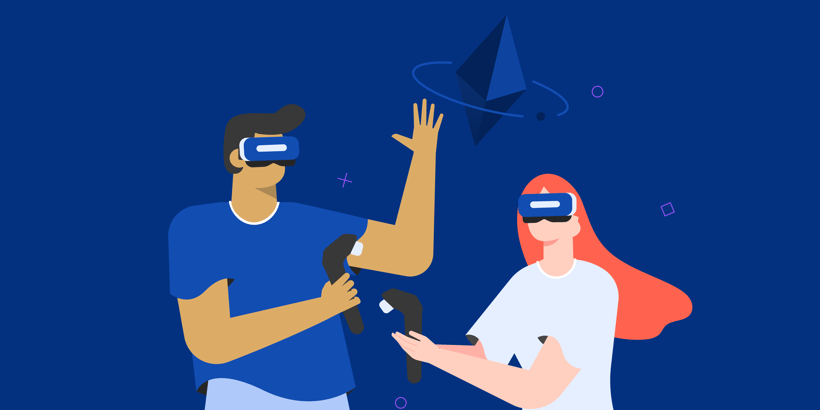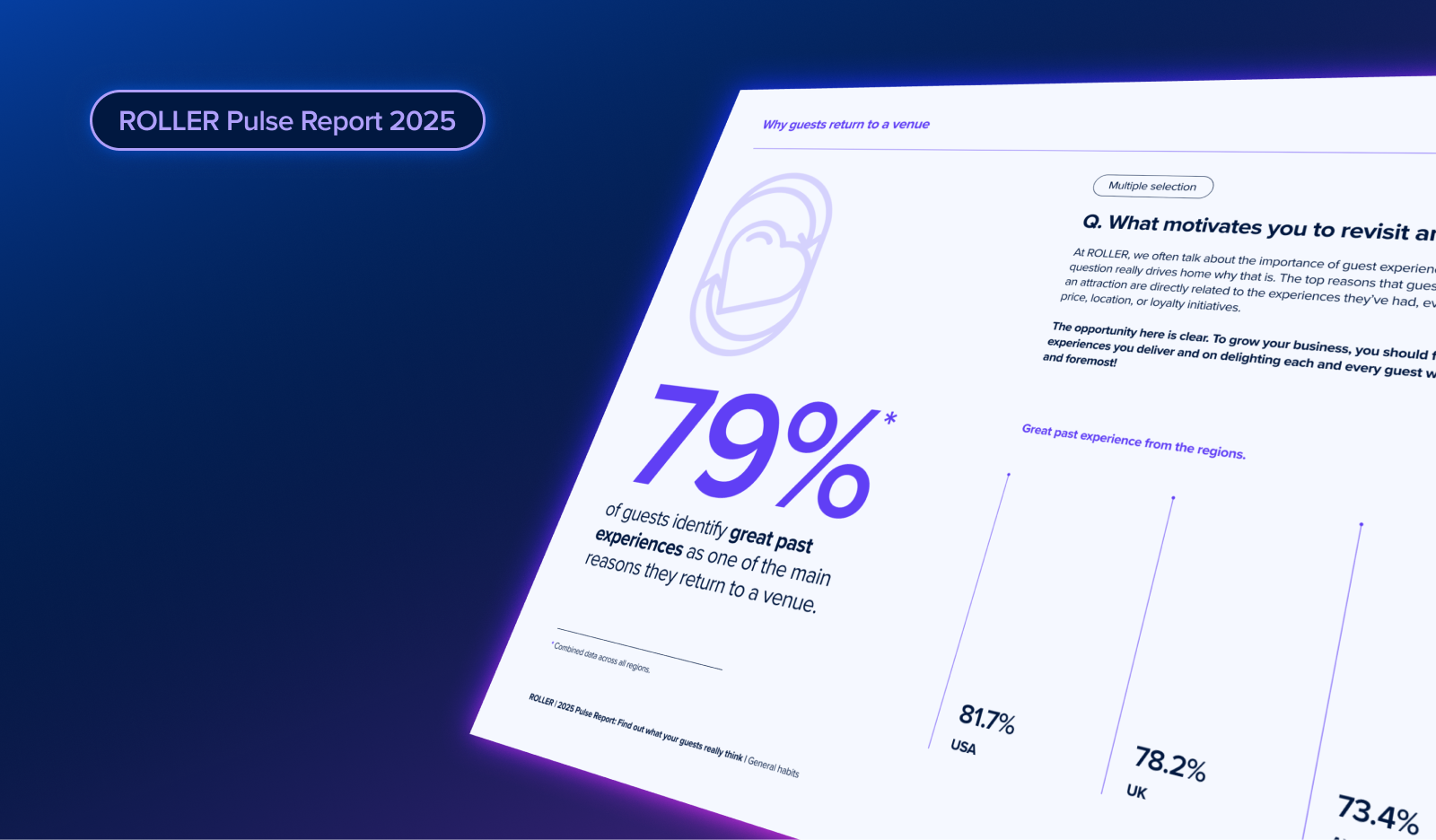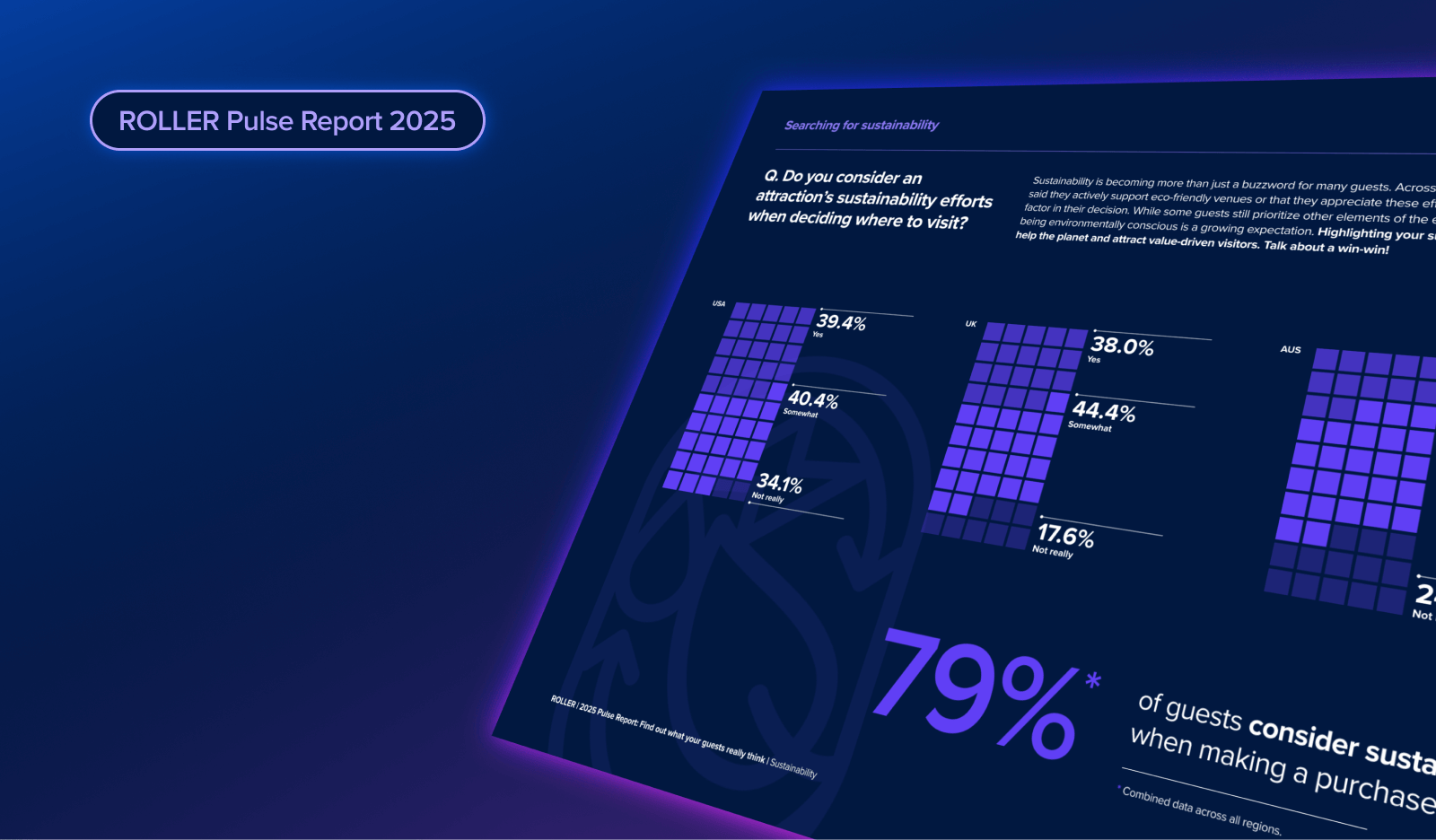What are Immersive Experiences? (Examples & How To Create One)

The term “immersive experience” has come up a lot lately, especially within the attractions industry and all realms of themed entertainment. You may have seen it at trade shows, online, or around the water cooler. The question that usually comes up is, what does this term actually mean?
In this article, we break down what an immersive experience is, the main types of immersive experiences, examples of each, and how you can develop one at your venue.
What is an immersive experience?
According to Cosm, an immersive experience is the “perception of being surrounded by — and being a part of — a different environment than our usual day-to-day.
This could be facilitated with technology like virtual reality goggles or a physical environment like a theme park attraction with multimedia components.”
What are the different types of immersive experiences?
Virtual reality
The first is virtual reality, where the entire experience happens in the digital world, requiring the guest to wear a headset or goggles that removes distractions from the world around them, regardless of their physical location.
VR experiences do not need substantial physical infrastructure compared to their real-life counterparts, and VR attractions can function successfully in a warehouse or similar environment.
Immersive experiences created in a physical environment
The second type, housed in a physical environment, is where the themed entertainment industry has blossomed.
When guests visit attractions like theme parks, zoos, aquariums, and other similar experiences, they see firsthand the result of immense talent and precision in manufacturing and fabrication and become completely immersed in it.
What do they have in common?
They both seek to achieve a suspension of disbelief.
When you have a VR headset on, you know that what you’re looking at is not happening in front of you in real life, but the lines between reality and fantasy are blurred, and you allow yourself to believe, even if just for a moment.
The same goes for physical environments, where you can disconnect from your daily reality and enjoy something outside your routine.
Let’s look at a couple of specific examples in each category.
Real-world immersive experience examples
Immersive experiences have existed for decades, even dating back to the opening of Disneyland in 1955, marked by a plaque at the entrance to the park telling guests, “Here you leave today and enter the world of yesterday, tomorrow, and fantasy.”
Fast forward to today, and immersive experiences have been amplified by the top creative developers in the themed entertainment industry and by the advancement of technology.
Let’s look at two examples each of virtual reality and physical environment immersive experiences.
Virtual reality immersive experience examples
The Void offers “warehouse-scale VR and realistic 4D effects”
While initially succumbing to the pandemic, The Void staged a comeback.
The Void has “warehouse-scale VR and realistic 4D effects” and leverages several key brands and intellectual properties for short-duration sessions. The Void is entirely digital and transports guests through VR headsets.
This enables substantially more flexibility than venues that build out their immersive experiences because it allows the operator to swap out one theme or brand for another and even control the supply based on current demand, similar to a movie theater that allocates more showing times for the most popular movies.
Jump replicates the experience of base jumping without any of the risk
Would you ever base jump in a wingsuit off a cliff or a building? If not, would you do it in VR, where you could get nearly the same feeling but with none of the risk? That’s what Jump provides to apprehensive daredevils who just want to dip their toe in the water.
A team of expert designers worked tirelessly to create the 3D landscape to truly give guests the illusion that they are partaking in one of the most death-defying activities in the world. The wingsuit is real, the thrill is real, and your safety is much more guaranteed.
Physical environment immersive experience examples
The Wizarding World of Harry Potter creates “true to fiction” immersive experiences
Initially opened in 2010 at Universal’s Islands of Adventure in Florida, The Wizarding World of Harry Potter has since been replicated at nearly every Universal property across the globe. The brand affiliation has led to significant increases in attendance by guests who want to experience, in real life, what they have read in books and seen in movies.
To be ultimately “true to the fiction,” the construction of this experience required an immense level of detail that left no stone unturned. From the unobstructed sightlines for guests in the lands, merchandise presented in the same way as in the books and movies, and even the original soundtrack playing — all of these elements make guests genuinely feel that they have entered a magical world.
Star Wars: Galactic Star Cruiser Adventure simulates a Star Wars themed cruise in space
Not to be outdone, Walt Disney World opened Star Wars: Galactic Star Cruiser Adventure in 2022 to complement the existing Galaxy’s Edge land at Disney’s Hollywood Studios and to truly take the concept of an immersive experience to the next level.
Simulating an experience closely aligned to a cruise in space, guests enter the stationary building and stay for two nights — aside from a brief excursion to visit Galaxy’s Edge. While “onboard,” guests participate in LARP, or live-action role-play, where guests and cast members act as if they are genuinely on a cruise excursion through space and living in the Star Wars universe. Every detail of the multi-day experience is thoughtfully designed to remove the guest from their everyday life.
How to create an immersive experience at your venue
Whether you fall into the camp of virtual reality or a physical environment, start by mapping out the following three steps as you develop your immersive experience.
- Define your “theme”
- Build your “walls”
- Remove distractions
Define your “theme”
Themes aren’t just for theme parks. They are the desired emotional outcome that you aspire for your guests.
Certainly, themes can include intellectual property, such as Harry Potter or Star Wars, but they can also be based on your experience.
“Relaxation” can be a theme for a spa, whereas a trampoline park might theme their venue based on “active fun.” Without defining the theme of your experience, you will be unable to immerse your guests in it.
Build your “walls”
Walls do not need to imply the physical structure of the building but rather the enclosure of the experience that enables immersion.
At a VR experience housed in a warehouse, you likely don’t want your guests to know they’re in a warehouse. So, from the point of arrival to when they put on their headsets, the environment must match the environment they will enter virtually.
In physical spaces, venue operators must consider how much outside the immersed experience the guest can physically see and limit this as much as possible.
At the Magic Kingdom at Walt Disney World, guests can rarely see a land that they aren’t physically in at that moment, and cast members cannot be in a land they don’t work in. Otherwise, this breaks the wall of the theme and distorts the immersion. Even a berm surrounds the park's perimeter, so guests cannot see beyond the park’s gates!
Remove distractions
With the theme defined and the walls built (figurative or literal), the key to preserving the immersion is to remove any possible distractions that guests may encounter during their journey that would disrupt the experience. These are largely operational, separate the front of the house from the back of the house, and are instances where the “real world” or anything else disconnected from the theme is present.
Examples of distractions can include the following:
- Employees talking about what time they get off work or their plans for a day off
- Administrative components such as clipboards, file cabinets, stationary, or maintenance logs all within guest view
- A television playing news or sports (unless they align with the theme, such as a sports bar or lobby lounge of a hotel catering to business travelers)
When distractions are removed, you can flawlessly provide the ultimate goal of an immersive experience: total escapism.
Immersive experiences are at the heart of the attractions industry
Immersive experiences are what the attractions industry has always been about — leaving your worries at the door, immersing yourself in the venue's offerings, and having a great time.
So whether you want to incorporate immersive experiences physically or technologically through virtual reality, remember to make it memorable, define your theme, build your walls and remove anything that may detract from the experience.
Reach out for a demo today to learn how ROLLER can help support your venue by removing friction from the guest experience as it relates to buying tickets, processing waivers, checking in guests, collecting guest feedback, and much more!
Related articles

.png)
What the 2025 Pulse Report Reveals About Guest Booking Behavior at Attractions

2025 Pulse Report: How Sustainability Is Shaping Guest Expectations
Enhance your guest experience
Get free education, tips and inspiration to help you run a successful venue.